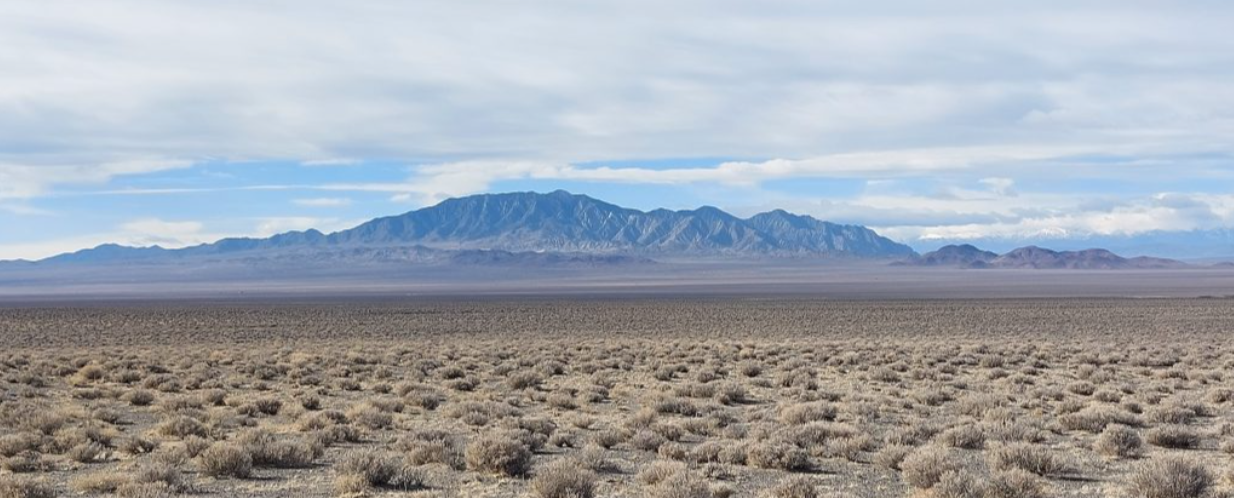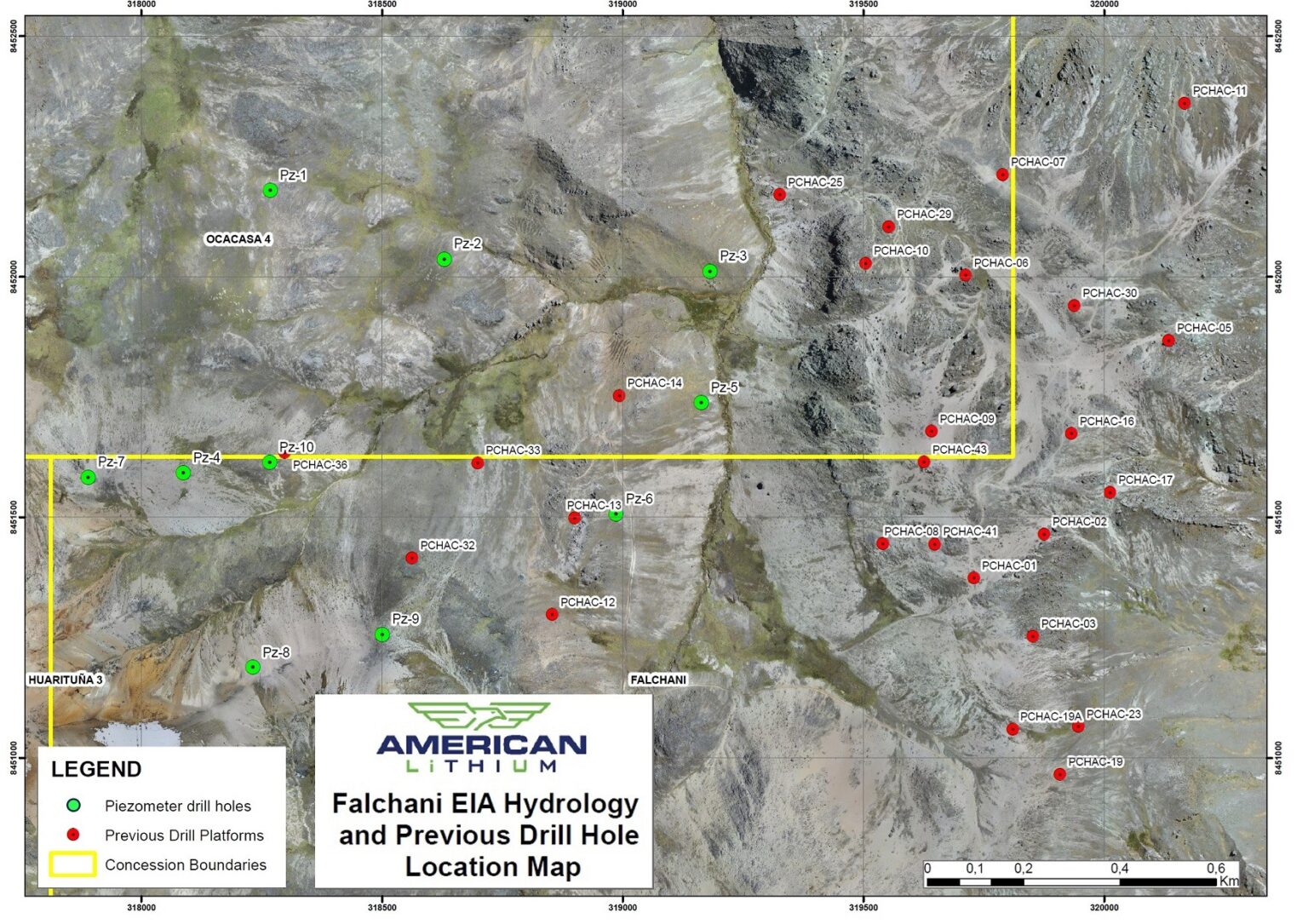American Lithium’s Latest Drilling Continues to Expand Falchani Lithium Project

American Lithium's latest drilling at its Falchani Lithium Project continues to deliver strong results, significantly expanding the mineralization footprint with latest results up to 5,025 ppm lithium and 8,290 ppm cesium.
About American Lithium
American Lithium Corp. (TSX-V: LI, NASDAQ: AMLI, Frankfurt: 5LA1) is actively engaged in developing large-scale lithium projects in mining-friendly regions of the Americas. The Vancouver-based company is focused on advancing its strategically located TLC Lithium Claystone Project in Nevada, its Falchani Hard-Rock Lithium Project in Peru, and its Macusani Uranium Project, also in Peru.
With robust preliminary economic assessments completed and significant resource expansion potential, American Lithium's projects are progressing from resource development through feasibility and permitting stages. Strong community relations further support the assets. Pre-feasibility work at Falchani Lithium Project is well underway, with TLC now also entering pre-feasibility.
With operations spanning across lithium-rich regions of the Americas, American Lithium is strategically positioned to capitalize on the growing lithium demand driven by the electric vehicle and battery storage markets.
Interview with Chief Executive Officer, Simon Clarke
Latest Drilling Results Show Strong Continuity
Recent drilling at American Lithium's flagship Falchani Lithium Project in Peru continues to deliver strong results. The drilling intersected long intervals of lithium-mineralized volcanic tuff and breccia material, with grades up to 5,025 ppm lithium and 8,290 ppm cesium.
Significantly, the drilling has extended the lithium mineralization footprint 400 meters west of the previous resource boundary. This demonstrates additional resource growth potential as Falchani continues to be expanded and delineated.
The new drill results will be incorporated into an updated mineral resource estimate being prepared by Stantec Consulting, which will provide an updated view of Falchani's world-class lithium resource potential.
Notably, ground water has yet to be encountered in any of the holes drilled to date. This provides further encouragement as Falchani advances towards feasibility studies and mine planning.
The latest results showcase Falchani's significant expansion potential and continue to derisk the timeline as American Lithium systematically explores and advances the project.
Highlights from the latest results include:
- Hole Pz07-TV intersected 160 meters averaging 1,817 ppm lithium, including 95 meters at 2,345 ppm lithium. This extended mineralization 400 meters west of the previous resource boundary, remaining open at depth.
- Hole Pz10-TV averaged 2,196 ppm lithium over 160 meters, including a 74 meter zone averaging 3,055 ppm lithium. It also remains open at depth beyond 160 meters.
- Thick intercepts of lithium mineralization continue to be encountered, linking the western and eastern portions of the deposit.
- The results showcase the continuity of lithium mineralized tuff, breccia and rhyolite at Falchani. They will be incorporated into an updated mineral resource estimate.

Permitting Progress and Government Support in Peru
CEO Simon Clarke provided insight into the favorable permitting environment American Lithium is seeing under the new administration in Peru.
Clarke acknowledged that the previous Peruvian government had stalled progress on mining permits across the industry. However, since the administration change, American Lithium has been "pleasantly surprised" by the support for the mining sector.
The new government, led by President Dina Boluarte, has made revitalizing mining a priority, with a focus on bringing jobs to impoverished regions and growing the domestic lithium industry. There has been tangible progress in permitting at Falchani since the administration change.
Clarke highlighted that the government has talked about "short-circuiting" mine permitting to accelerate projects. It has also expressly stated it wants to see lithium developed in Peru as an industrial metal.
At Falchani, American Lithium has already received some initial permits from the new administration. The company is waiting on a couple additional permits, which are expected very soon based on the constructive dialogue with the government.
The supportive stance from the new government has facilitated real progress at Falchani. With the administration emphasizing streamlined permitting, American Lithium is cautiously optimistic the project can continue advancing quickly through feasibility and into development.
Ongoing EIA Drilling and Permitting
American Lithium's foresight to launch the Environmental Impact Assessment (EIA) permitting process early is now paying dividends.
Undertaking the EIA in 2022 has allowed the company to complete exploratory drilling at Falchani. As CEO Simon Clarke explained, the EIA process allows for drilling up to 10 exploratory holes, primarily for hydrological studies.
Critically, American Lithium has leveraged this EIA drilling to achieve key resource expansion at Falchani. The 10 EIA holes have extended the mineralized footprint 400 meters west and to the north.
Just as importantly, the EIA drilling has facilitated reclassification of a portion of the resource from the inferred to the Measured and Indicated (M&I) categories. An M&I resource is required for reserve estimation as the project moves through feasibility.
The drilling done under the EIA is a major step forward for the prefeasibility study timeline. American Lithium will incorporate the results into an updated PEA targeted for September 2023.
Being nearly a year into the EIA process positions American Lithium extremely well for when mine permitting commences. It provides a head start that helps derisk meeting development timelines.
Updated PEA and Importance of Byproducts
The upcoming updated Preliminary Economic Assessment (PEA) for Falchani will be an important milestone for the pre-feasibility study timeline.
Even with a conservative lithium price assumption, Simon Clarke explained that the updated PEA will likely show a significant increase in NPV compared to the previous study. This is due to higher commodity pricing and some inflationary impacts on opex and capex.
Importantly, the new drilling results have shown potential to add more mineralized material from breccia zones above and below the main lithium-bearing volcanic tuff unit. While the updated PEA will focus on the tuff, the additional zones offer further resource expansion potential as the project moves into pre-feasibility.
Clarke also highlighted the increasing importance of byproduct credits from cesium and sulphate of potash (SOP) production. While not huge economic contributors, these byproducts offer strategic value.
Peru imports most of its fertilizer, so Falchani's SOP production could make the country self-sufficient. Cesium is a critical mineral with military applications that is primarily sourced from China. Falchani could provide a Western supply of this scarce mineral.
The elevated cesium grades encountered in the latest drilling adds further support for the byproduct potential. Clarke stated the byproducts will add meaningful value, both economically and strategically, as Falchani is advanced.
Lithium Thematic & Pegamatites
With the current surge of interest in hard rock lithium pegmatites recently, Simon Clarke shared how that affects American Lithium as a more advanced development story.
Clarke responded that overall, he remains somewhat disappointed with how the lithium market is being perceived. In his view, most analysts forecast the market moving towards balance by 2023-2024 as new supply comes online. However, supply ramp-ups consistently take longer than expected. Clarke believes demand will keep outpacing supply over the medium to long-term, so the lithium pricing environment should remain strong despite some short term volatility.
While pegmatites may seem less risky based on established mining models in Australia, Clarke explained they still require downstream processing to produce battery-grade lithium. Currently most pegmatite concentrates get shipped to China for this refining. He contrasted this with American Lithium's focus on producing high purity lithium products on-site, without needing additional refining abroad.
Companies able to produce battery-grade lithium within North America will have a strategic advantage long-term, aligning with policy goals for domestic critical mineral supply chains. He expects renewed interest in South American brine projects as the largest scalable source of high purity lithium in the western hemisphere over the near-term.
Specifically, Clarke anticipates Lithium Americas will get more attention following its restructuring to separate South American and North American operations. He believes impending U.S. government support for Lithium Americas to build its mine will help restore investor interest in lithium projects, benefitting similar companies like American Lithium.
In summary, while pegmatites have attracted strong investor interest recently, Clarke remains confident in American Lithium's positioning. He believes mainstream institutional investors still underestimate lithium's essential role in the accelerating energy transition. Their eventual recognition, combined with limited new western hemisphere production, provides a strong backdrop for American Lithium.
Conclusion for Investors
As lithium demand accelerates globally, American Lithium is strongly positioned to capitalize through its ownership of a major lithium project located in a top mining jurisdiction.
The ongoing expansion of Falchani’s lithium mineralization footprint and advancing permitting activities continue to derisk the project timeline. This bodes well for investors seeking near-term lithium production exposure.
With lithium prices remaining well above historical levels, American Lithium offers an attractive opportunity for investors looking to benefit from the accelerating energy transition.
Analyst's Notes




Subscribe to Our Channel
Stay Informed


















